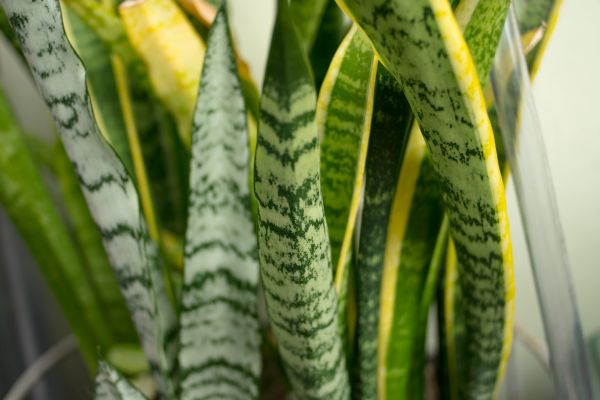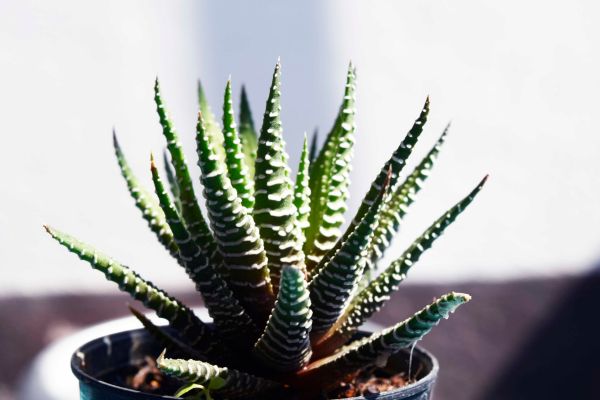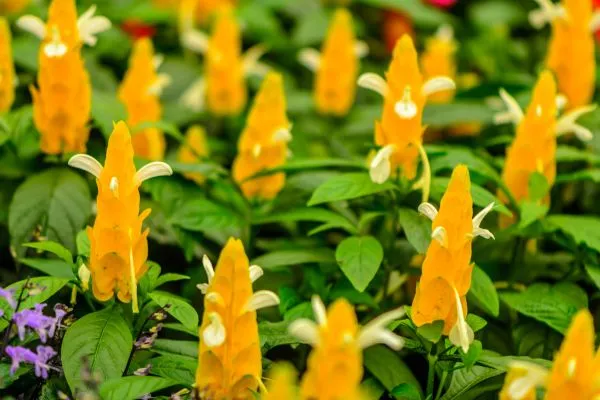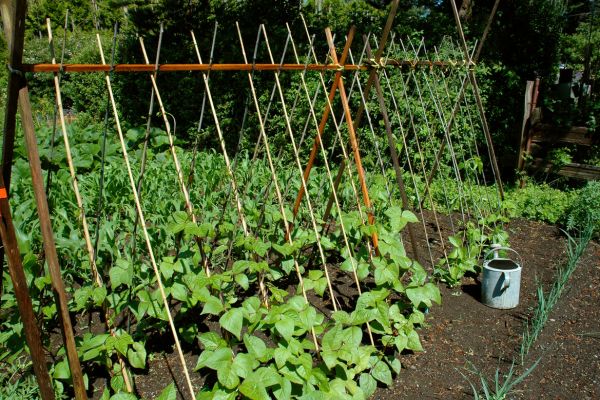The Vertical Garden Trend: How to Adopt It in Your Home
Increasing urbanization has led to an increase in the number of apartments and compact spaces in large cities. As a result, the need to bring nature indoors has become more evident than ever. In this context, the tendency of vertical gardens has gained traction, offering an innovative solution for growing plants and flowers in limited spaces. In this article, we will explore the growing popularity of vertical gardens, their benefits and how you can adopt them into your home, adding beauty, freshness and harmony to the environment.
The Charms of Vertical Gardens
Vertical gardens, also known as wall gardens or green walls, are structures that allow plants to be grown vertically. These structures can be installed both indoors and outdoors, enabling the creative use of vertical spaces to grow a wide variety of plants, from flowers and aromatic herbs to vegetables and ornamental plants.
The stunning beauty of vertical gardens has captivated architects, landscapers and gardening enthusiasts, transforming these structures into true living works of art. Furthermore, these gardens provide environmental benefits, such as improving air quality, thermal and acoustic insulation, as well as attracting pollinating insects.
These structures allow residents to create a lush green environment, regardless of available space, connecting people with nature and promoting a sense of well-being and relaxation.
The Benefits of Vertical Gardens
In addition to their stunning aesthetics, vertical gardens offer numerous benefits for residents and the environment. One of the main advantages is the ability to purify the air, removing pollutants and toxins present in closed environments, such as volatile organic compounds (VOCs) and formaldehyde. This air filtration process contributes to improving the quality of the indoor environment, providing cleaner and healthier air for residents.
Another important advantage is temperature regulation. Vertical gardens act as natural thermal insulators, helping to keep the environment cooler during hot days and providing a more cozy environment on cold days.
Furthermore, these green structures help reduce noise, especially in noisy urban environments. Plants act as an efficient acoustic insulator, absorbing and reducing sound, making the space more peaceful and conducive to relaxation and concentration.
Another notable benefit is the attraction of biodiversity. Vertical gardens offer shelter and food for pollinating insects, such as bees and butterflies, which play a fundamental role in the reproduction of various plant species.
Choosing the Suitable Location
Before installing a vertical garden, it is essential to choose the appropriate location to ensure the success of the project. Check the amount of sunlight the location receives daily, as light availability is a crucial factor in plant selection.
Environments with good light, such as sunny balconies or walls close to windows, are ideal for most plants. If the location has little natural light, choose species that adapt well to shady environments.
Ventilation is also an important aspect to consider. Make sure that the chosen location has good air circulation to avoid problems with excessive humidity and the development of plant diseases.
Structures and Irrigation Systems
There are different types of structures to create vertical gardens, and the choice depends on the space available and the style you want to adopt. The most common options are modular panels, trellises, shelves and hanging planting bags.
Modular panels are practical and easy to install, allowing pots to be fitted into pre-defined spaces. Trellises and shelves offer greater flexibility, allowing you to organize the pots according to your creativity.
To keep plants well watered, it is important to invest in a suitable irrigation system. Options such as drip irrigation, hydroponics and self-watering pots can be used to ensure that plants receive the right amount of water.
Automated irrigation systems are also a great option for those who have a busy routine and cannot dedicate a lot of time to caring for their vertical garden. With the correct programming, the system will provide the amount of water necessary for the plants, keeping them healthy and beautiful.
Choosing Plants
Plant selection is a crucial step towards the success of a vertical garden. Choose species that adapt well to the light and humidity conditions of the location. Flowers, herbs, vegetables and ornamental plants are popular options for vertical gardens.
Also consider the size of the plants, to prevent some species from growing too much and harming the development of others. Remember that a vertical garden is like a blank canvas, and choosing plant colors and textures can create a stunning visual effect.
In addition to aesthetic characteristics, take into account the time you can dedicate to garden care. Some species require more attention and specific care, while others are more resistant and low maintenance.
Preparing the Soil and Pots
To ensure the healthy development of plants, it is essential to prepare the soil and choose the appropriate pots. Use a good quality substrate, enriched with organic matter, to provide the necessary nutrients for the plants.
Pots must have drainage holes to prevent water accumulation, which could harm plant roots. If the structure used is a modular panel with spaces for pots, make sure that the pots fit correctly and are well fixed to avoid accidents.
When preparing the soil, you can add fertilizers and conditioners, ensuring that plants have all the essential nutrients for healthy growth.
Planning the Vertical Garden Composition
With the planning in hand, it's time to install and assemble the vertical garden. Follow the instructions for the chosen structure and securely attach it to the chosen wall or support. Arrange the vases according to the previously drawn plan, taking care that they are well fitted and fixed.
During assembly, you can make adjustments to the arrangement of the plants, experimenting with different arrangements until you find the perfect combination.
Care and Maintenance
Vertical gardens require regular care and maintenance to stay healthy and beautiful. Water the plants according to the needs of each species, avoiding both excess and lack of water.
Carry out periodic pruning to remove dry leaves and withered flowers, stimulating the growth of new shoots and keeping the garden always beautiful and blooming.
Additionally, monitor plant health regularly to quickly identify any signs of disease or pests. If necessary, take measures to control and avoid problems that could compromise plant development.
Indoor Vertical Gardens
Vertical gardens can also be installed indoors, bringing freshness and beauty into the home. Environments such as living rooms, kitchens and hallways can be transformed with the presence of a vertical garden.
Choose plants that adapt well to environments with little natural light, such as shade species. It is worth investing in artificial lighting to complement natural light and ensure the healthy development of plants.
Indoor environments, the choice of plants can be even more diverse, as you can create different compositions for each room, taking into account the decoration and specific lighting of each space.
Vertical Gardens on Balconies and Balconies
Balconies and balconies are ideal spaces for creating vertical gardens, as they generally offer good light and ventilation. Use walls or railings to secure the vertical garden structure and create a pleasant environment to relax and enjoy nature.
In these spaces, you can grow ornamental plants, aromatic herbs and even vegetables, enjoying fresh and healthy products directly from your balcony.
For a complete experience, add comfortable benches or armchairs, creating a space to relax and enjoy contact with nature without leaving home.
Vertical Gardens in Commercial Environments
Vertical gardens have also been widely adopted in commercial environments, such as offices, restaurants and stores. In addition to creating a more pleasant and welcoming environment for customers and employees, these structures convey an image of sustainability and concern for the environment.
In commercial environments, opt for low-maintenance plants that do not require daily care, ensuring that the vertical garden always remains beautiful and well-kept.
Use the vertical garden as a way to convey the brand's identity, incorporating visual elements related to the business or using colors and textures that reflect the essence of the company.
Inspirations and Creative Ideas
Creativity is the limit when it comes to vertical gardens. Look for inspiration in magazines, websites, social networks and already completed projects. Create a reference wall with the ideas that you like most and develop a unique and personalized project for your home.
In addition to plants, you can incorporate other decorative elements, such as paintings, signs, lights and even furniture, to create a complete and welcoming environment.
Conclusion
The vertical garden trend is a creative and effective response to the challenge of bringing nature into limited urban spaces. These green structures provide a unique experience, combining the beauty of plants with environmental and health benefits.
By adopting a vertical garden in your home, you will be bringing freshness, harmony and serenity to the environment, as well as contributing to improving air quality and ecological balance.
Whether indoors or outdoors, on balconies, balconies or commercial environments, vertical gardens are a trend that is here to stay. Be creative, choose the plants that best suit your lifestyle and enjoy the countless benefits that these green structures can provide to your home and your well-being.
Transform empty walls into true living panels, and allow nature to flourish in spaces where it previously had no place. Adopt the vertical garden trend and discover how the beauty and vitality of plants can transform your life and home. Be a true vertical gardener, creating a more sustainable and pleasant environment for you and everyone who visits you. Enjoy all the beauty and benefits that nature has to offer, even in compact spaces, and watch your home transform into a green oasis of harmony and well-being.






